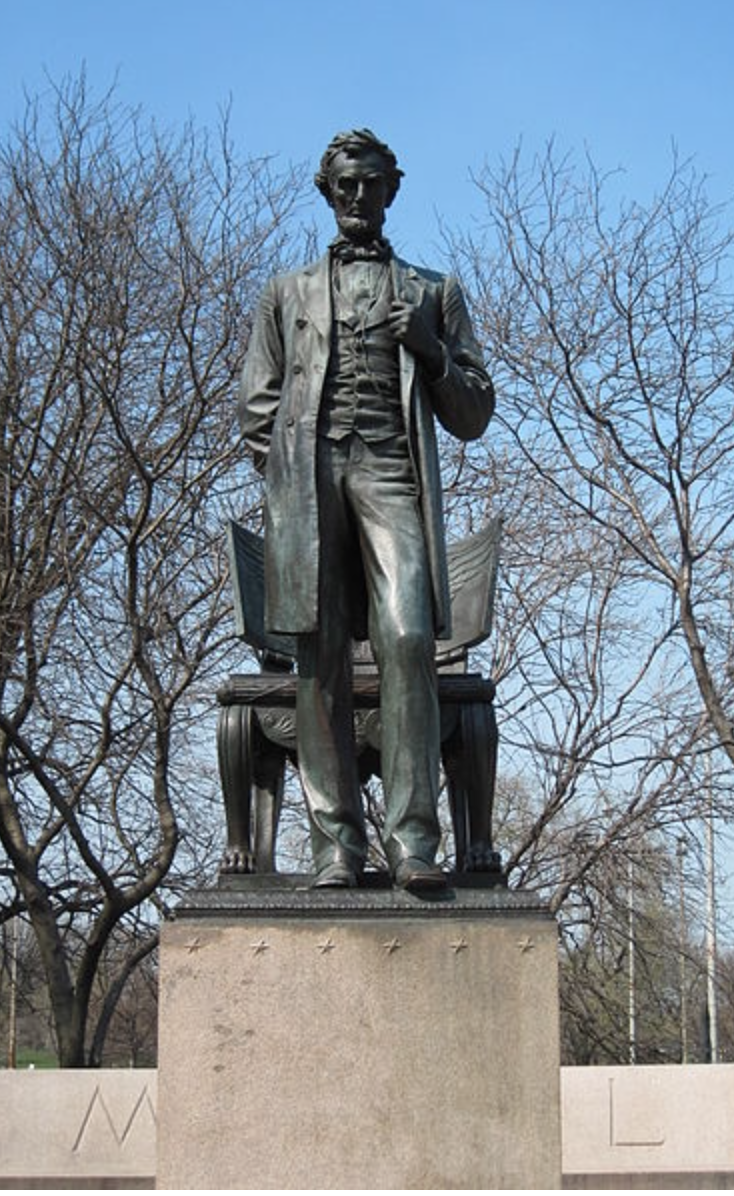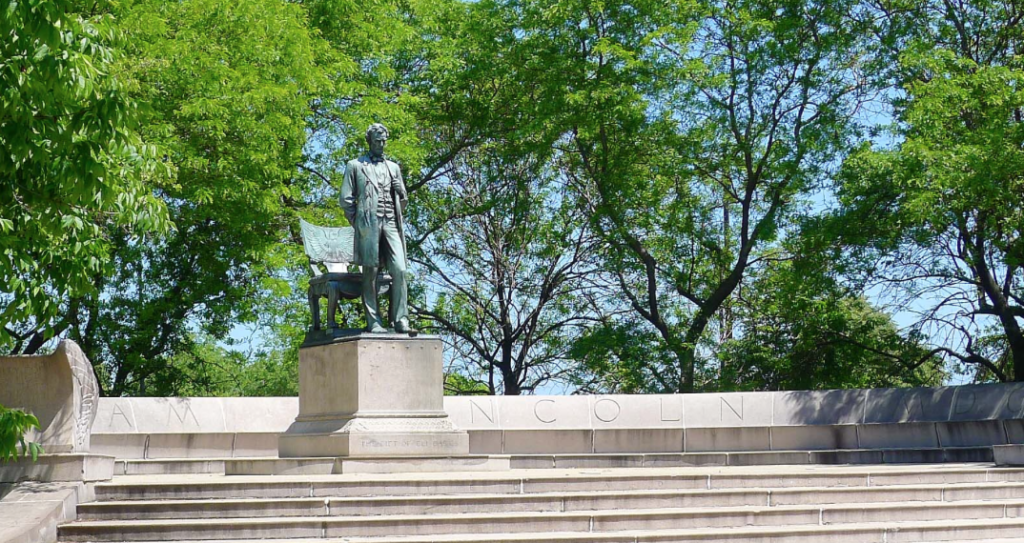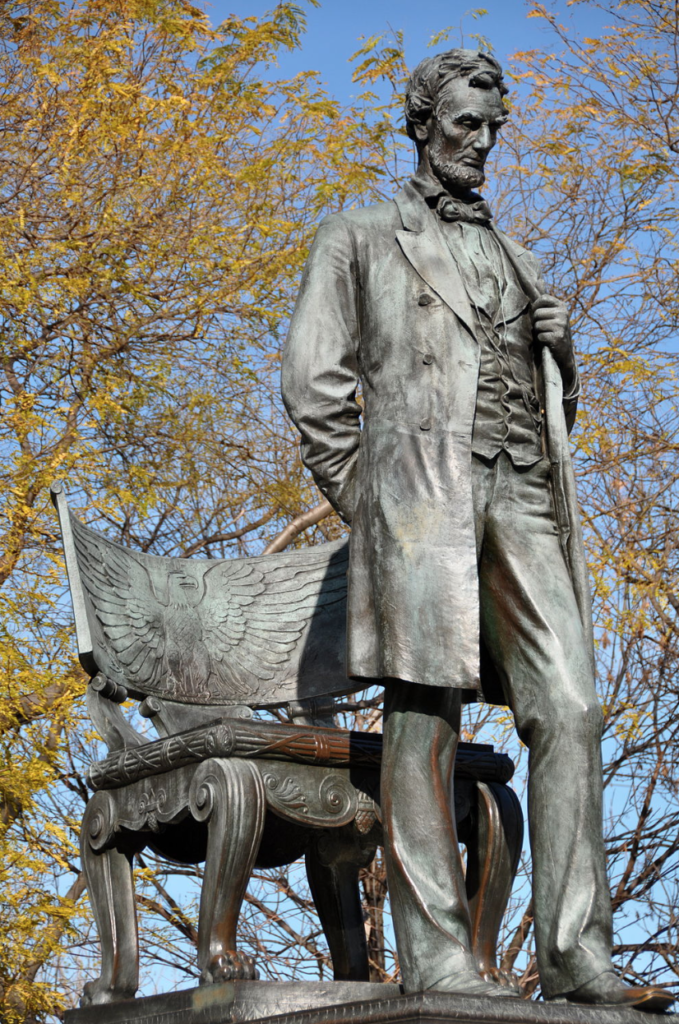Off N. Lake Shore Drive near W. North Avenue
Chicago

This is one of the two sculptures in Lincoln Park that were bequeathed to Chicago upon the death of lumberman Eli Bates.
This 12 foot tall figure known as the “Standing Lincoln” was the first of Saint-Gaudens’ statues of Lincoln. He received the commission for this monument in 1884 and began work the following year.
Lincoln had made quite an impression on Saint-Gaudens when he saw Lincoln in 1860 . “Lincoln stood tall in the carriage, his dark uncovered head bent in contemplative acknowledgement of the waiting people, and the broadcloth of his black coat shone rich and silken in the sunlight”.
To capture Lincoln’s appearance, Saint-Gaudens relied on plaster life masks made by Leonard Volk of Lincoln’s Hands and face. To achieve the pose Saint-Gardens used Langdon Morse a 6 foot 4 farmer from Windsor Vermont.
As he worked out the design for the statue, St. Gaudens experimented with a variety of poses: seated and standing, arms crossed in front of his body, or holding a document. Art critic Marianna Griswold Van Rensselaer described the decision in her review of the statue in The Century (1887):
“The first question to be decided must have been: Shall the impression to be given base itself primarily upon the man of action or upon the man of affairs? Shall the statue be standing or seated? In the solution of this question we find the most striking originality of the work. The impression given bases itself in equal measure upon the man of action and the
man of affairs. Lincoln is standing, but stands in front of a chair from which he has just risen. He is before the people to counsel and direct them, but has just turned from that other phase of his activity in which he was their executive and their protector. Two ideas are thus expressed in the composition, but they are not separately, independently expressed to the detriment of unity. The artist has blended them to the eye as our own thought blends them when we speak of Lincoln. The pose reveals the man of action, but represents a man ready for action, not really engaged in it; and the chair clearly typical of the Chair of State reveals his title to act no less than his methods of self-preparation. We see, therefore, that completeness of expression has been arrived at through a symbolic, idealistic conception.”
 Architect, Stanford White, of the New York firm of McKim, Mead and White, designed the monument’s base. He added the long, curving exedra bench to encourage visitors to sit and enjoy the statue,
Architect, Stanford White, of the New York firm of McKim, Mead and White, designed the monument’s base. He added the long, curving exedra bench to encourage visitors to sit and enjoy the statue,
This was one of 20 such artistic collaborations between White and Saint-Gaudens who also became close friends.
The monument was cast in bronze by the Henry-Bonnard Bronze Company in New York, and dedicated on October 22, 1887, to a large crowd. Lincoln’s son, Robert, considered this the best sculpture of his father of the many that were done.
After Saint-Gaudens’ death, his wife authorized an edition of smaller bronze copies. These are found in public institutions around the country. Full- size casts of the statue were later installed in London, England, Mexico City, Cambridge, Massachusetts and Hollywood Hills, California. The image of Lincoln used for the commemorative stamp
of 1909, was drawn from the head of this statue.
Saint-Gaudens has been in this site before, you can read about him here.
